County Planning Habitat Restoration in Milwaukee River Greenway
Project will clear invasive species, improve habitats for plants and wildlife.
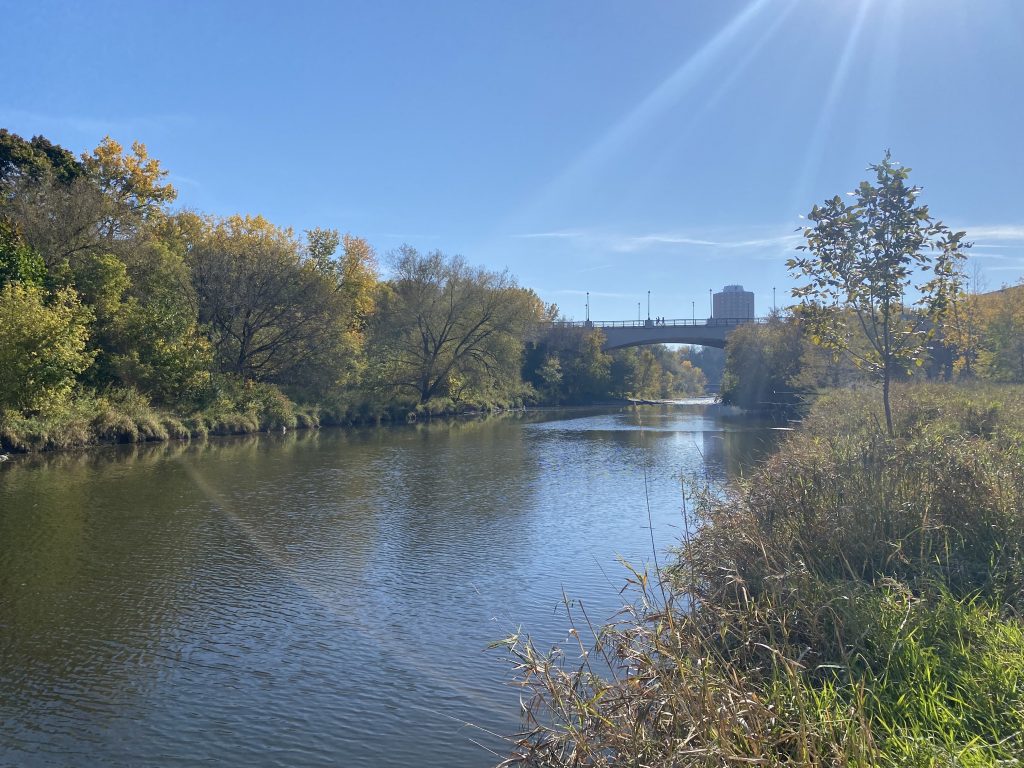
Milwaukee River and North Avenue Bridge. Photo by Graham Kilmer.
When the Milwaukee County parks system is discussed, it’s often referred to as a jewel or a gem. It’s been given the moniker of Milwaukee’s “Emerald Necklace” to describe the way the parks encircle the county — a derivative of what famed landscape architect Frederick Law Olmsted called a “Grand Necklace of Parks.”
Natalie Dutack, a parks department employee, is in charge of the new project, which will try to restore some of the natural plant and wildlife habitats that prevailed along the Milwaukee River. If everything goes to plan, the department will recreate a unique habitat native to the area that has been missing from the river corridor for some time.
“The Emerald Necklace design not only was providing areas for people to recreate in, at the end of the day it preserves some habitat that you really don’t see in Milwaukee anymore,” Dutack said in an interview with Urban Milwaukee. “Along the rivers there are wetland and forest habitats that are not commonly found in southeastern Wisconsin anymore.”
The project is focusing on a seven-mile stretch of the corridor containing approximately 600 acres, seven parks, the Milwaukee River Parkway, Cambridge Woods, and 240 acres of natural habitat. The parks in question are Kern, Lincoln, Estabrook, Gordon, Riverside, Pleasant Valley and Hubbard — the latter is a park owned by the City of Shorewood.
These natural areas are part of the Milwaukee Estuary Area of Concern. An unfortunate designation comes from the U.S. Environmental Protection Agency (EPA) and generally means they are considered to be seriously environmentally degraded. The parks department is working with Shorewood and the Urban Ecology Center and the River Revitalization Foundation on the project, “So it’s a big multi-partner effort,” Dutack said. The project is also working in coordination with other remediation projects in the estuary, including an EPA project aimed at remediating pollution in the waterway that is expected to run from roughly the Estabrook Dam to North Avenue.
The entire project from planning to implementation will be funded through a Great Lakes Restoration Initiative Grant. These grants are funded by the federal government and passed through the Wisconsin Department of Natural Resources (DNR) to local partners like the parks department.

Degraded meadow and floodplain along Milwaukee River. Photo by Graham Kilmer.
The parks project is focused on the upland area of the river corridor, the hills and meadows that line the Milwaukee River. The degradation in the area has been occurring for more than 100 years. Industry and urban development have contributed to this in various ways. The North Avenue Dam, for example, flooded areas along the river until it came down in 1997. The polluted water contaminated the soil in the floodplains that now sit dry. But, as the parks department notes in its restoration plan for the greenway, a new “ecologically destabilizing event” is occurring as emerald ash borer contributes to a rapid loss in forest canopy.
Habitat restoration for a project like this one, Dutack explained, can be highly complex in detail but is easily broken down into two general phases of work. First, invasive species removal, then revegetation with a diverse range of plant species that will improve the resilience of the habitat.
The project is focusing on three habitats common along the greenway which include floodplain forest, southern mesic forest and sedge meadow. The latter is a type of meadow that was known to have existed in this area, but does not anymore, Dutack said. Areas along the river that are filled largely with tall grasses like Reed Canary Grass and Phragmites — both invasive — would be cleared out for new plantings native to sedge meadows.
Restoring these habitats for plants and animals to what they were prior tp industrialization and development of the region is nearly impossible. But this project is an opportunity to polish this piece of the emerald necklace and provide some resiliency to this rare wilderness that runs through Milwaukee.
If you think stories like this are important, become a member of Urban Milwaukee and help support real, independent journalism. Plus you get some cool added benefits.
More about the Area of Concern Abatement Effort
- New Machine Quietly Cleans Milwaukee’s Water - Jeramey Jannene - Mar 21st, 2025
- Photo Gallery: New South Shore Park Beach Takes Shape - Graham Kilmer - Mar 14th, 2025
- MKE County: Effort Aims To Reduce E. Coli Closures at Bradford Beach - Graham Kilmer - Feb 27th, 2025
- MKE County: Habitat Restoration Planned in Kletzsch Park - Graham Kilmer - Feb 14th, 2025
- MKE County: County Deploying $1.3 Million in Environmental Cleanup Grants - Graham Kilmer - Sep 19th, 2024
- MKE County: Habitat Restoration Coming to Kohl Park - Graham Kilmer - Jan 12th, 2024
- MKE County: Largest Fish Barrier Between Grafton and Lake Michigan Removed - Graham Kilmer - Dec 21st, 2023
- EPA Giving Milwaukee $17 Million For Sewer Project - Evan Casey - Nov 2nd, 2023
- Cleanup Of Polluted Great Lakes Sites Reverses Housing Price Declines - Danielle Kaeding - Oct 19th, 2023
- Milwaukee Wins $275 Million Grant To Fund Massive Waterway Cleanup - Jeramey Jannene - Oct 12th, 2023
Read more about Area of Concern Abatement Effort here
MKE County
-
Fellow Judge Testifies in Dugan Case
 Dec 16th, 2025 by Graham Kilmer
Dec 16th, 2025 by Graham Kilmer
-
Key Questions in Dugan Trial Take Shape on First Day
 Dec 15th, 2025 by Graham Kilmer
Dec 15th, 2025 by Graham Kilmer
-
FTA Tells Milwaukee to Crack Down on Fare Evasion — Even Where Fares Don’t Exist
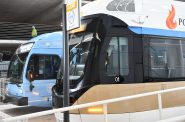 Dec 12th, 2025 by Graham Kilmer
Dec 12th, 2025 by Graham Kilmer






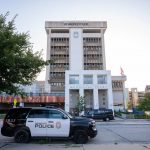

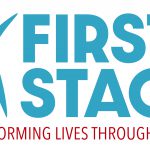

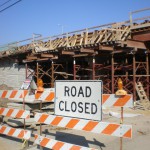






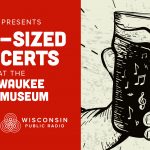




I’m happy to hear that Milwaukee County secured funding for this project. I’m hoping there are more projects ahead in other “needy” areas.
One, in particular, that I hold precious, is Jacobus Park pond. Much improvement has already occurred in the park with several trails with plant and tree identification markers. There are ongoing efforts to remove garlic mustard and other invasives. And naturalizing all around the pond is impressive. But I watch the pond being taken over by lily pads, themselves invasive, and scummy surfaces. In the warmer months, children play along the edges of the pond, searching for frogs and other critters. When the pond freezes over, we used to see ice skaters of all ages out there. Later, it became populated by hockey players. But, in the past several years, nada!
This is an historic place. A pond, a lodge with a warming area for skaters. A small playground, a splash pool. C’mon, guys, let’s get some funding to restore the pond! ( I’m hoping someone from Milwaukee County reads this)